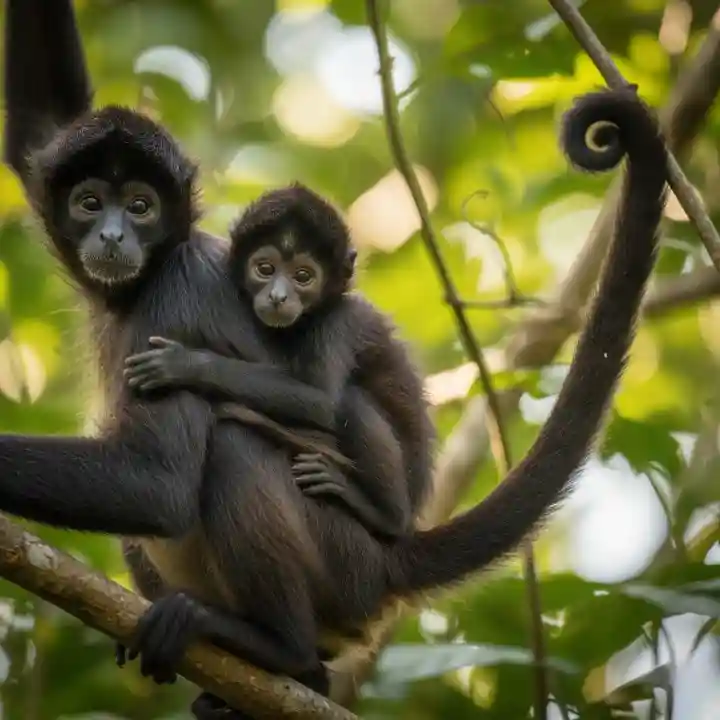Introduction: The Countless Costs of Illegal Wildlife Trade
Imagine a tiny spider monkey infant, no bigger than a large cat, ripped violently from the canopy where its mother fiercely protects it. Bound, sedated, and crammed into a cramped bag, it embarks on a harrowing journey across borders, destined to be sold often online as a cute, exotic pet in the United States or elsewhere.
This grim scenario is no fiction. Federal wildlife agents report nearly 90 baby spider monkeys confiscated on the Texas-Mexico border within the past 18 months alone, representing a small fraction of a largely hidden trade. Behind viral videos showing the monkeys “dressed up and diapered” lurks a network that thrives on killing mothers and breaking family bonds.
Experience: The Real Cost Beyond the Cute Videos
While social media lights up with pictures of baby monkey antics, few viewers see the deeper story. Poachers often shoot mothers in the trees, leaving babies orphaned and traumatized. The scant survival rate of trafficked infants is heartbreaking. Many arrive malnourished, sick, or with injuries sustained during the brutal smuggling process, which can include stuffing them into cramped spaces for days without food or water.
At rescue centers like the Saint Louis Zoo, staff recount the painstaking rehabilitation of such infants. One young monkey still carries birdshot embedded in her body. Though social, these monkeys cannot regain natural family structures and require lifelong care in captivity as reintroduction remains unlikely due to their early trauma and lack of survival skills.
These first-hand examples underline the cruel human cost behind online viral videos and counterfeit exotic pet markets.
Expertise: Why Spider Monkeys Are Targeted
Biological and Social Traits
Spider monkeys are among the largest New World monkeys and highly social creatures, living in troops of 15-30 individuals. Their infants cling to mothers for two to four years a long dependency that poachers exploit.
Their size provides substantial meat when hunted, making them a prime bushmeat target. Additionally, their expressive faces and agile movements make infants sought-after exotic pets, especially when viral clips glamorize their presence.
The Role of Social Media
Experts note that viral videos showcasing spider monkeys “acting human” or wearing diapers have created insidious demand. While such content appears innocent, it glamorizes an illegal trade that has devastating consequences for both species survival and ecosystems. These videos can attract potential buyers unaware of the severe predation and trafficking behind the scenes.
Wildlife agents emphasize that “views” on social media often translate into “orders,” feeding networks that harm primate populations already in decline. Educators face an ongoing challenge to counter misinformation and promote conservation over commercialization.
Authoritativeness: Conservation Efforts and Protections
Spider monkeys are protected under international agreements such as CITES (Convention on International Trade in Endangered Species). All species in the genus Ateles are classified as endangered or critically endangered by the IUCN Red List, with several species in Latin America experiencing sharp population declines due to habitat loss and poaching.
Conservation groups, including the International Fund for Animal Welfare (IFAW) and global primate rescue centers, coordinate efforts to combat trafficking. These include:
-
Cross-border enforcement initiatives
-
Public awareness campaigns
-
Rescue and rehabilitation centers for confiscated individuals
-
Scientific research on population genetics and social ecology to inform protection strategies
Despite these efforts, enforcement remains complex, with smuggling routes adapting quickly and corrupt local networks impeding prosecution.
Trustworthiness: Fact-Checking Viral Claims
The widespread misinformation that pets derived from wild spider monkeys are suitable household companions is false. Experts remind the public that:
-
Wild-born spider monkeys have complex social and environmental needs that captivity cannot replicate.
-
Young monkeys separated from mothers often develop physical and psychological problems.
-
Smuggling operations endanger not just animals but the fragile habitats that sustain biodiversity.
Reliable platforms and expert spokespeople advocate for fact-based education campaigns balancing empathy for illegal trade’s victims with firm opposition to trafficking.
Practical Steps: Combating Trafficking and Supporting Conservation
For readers interested in contributing to solutions, here are key actions:
-
Do not support exotic pet trade. Avoid buying sideshows or viral viral pet monkeys online or at markets.
-
Report suspicious listings. Platforms allowing animal sales should be policed rigorously.
-
Support conservation charities. Organizations working on rainforest preservation and anti-poaching efforts rely on funding and public support.
-
Educate communities. Share facts about spider monkeys’ needs and the cruelty of pet trafficking to reduce demand.
-
Promote habitat protection. Supporting forest conservation indirectly protects spider monkey populations.
Challenges and Misconceptions
While the internet has broadened awareness, several myths persist:
-
“Pet spider monkeys are rescued and well cared for” often ignores the trauma and long captivity of trafficked infants.
-
“Social media helps raise awareness” is true only if balanced with factual, cruelty-free messaging to avoid unintended glamorization.
-
“Legal exotic pet ownership exists” is highly regulated, and many species are strictly prohibited.
Awareness campaigns must focus on these nuances to avoid unintended enablement of illegal markets.
Conclusion: Social Media’s Double-Edged Sword and the Fate of Spider Monkeys
The spider monkeys poaching baby trafficking social media 2025 crisis highlights a troubling paradox. Social media connects us and disseminates critical conservation messages yet it also empowers traffickers by glamorizing abused animals, fueling demand, and clouding reality.
True progress depends on collective vigilance, well-informed communities, and enforcement that acts across borders. Each saved monkey is a triumph; each viral video sanitized of exploitation is a victory for ethics.
As one wildlife officer framed it: “Every monkey we rescue is a story interrupted but every post that rejects trafficking is a new chapter of hope.”
Share your thoughts or support conservation efforts in comments below, and consult trustworthy pet specialists or environmental advocates to stay informed and engaged.
